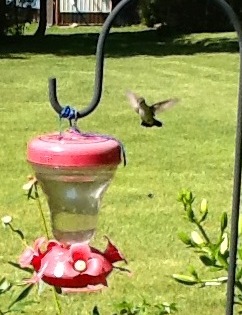Feeding Honey

Honey is a cat, one of our (currently 11) barn cats. Life on our acreage has taught us a lot about cats. Cats are fiercely loyal to feline family members. Cats develop complex social networks, and genuinely feel superior to dogs. Cats can be born with disabilities, just like children. Over the past 16 years, we have had a deaf cat, a mute cat,and a male calico cat. We had a cat with seasonal allergies so severe that she would shed ALL of her fur each spring. And we have Honey. Honey was born last summer with severe neurological deficits. Her third eyelids cannot retract, so she is functionally blind. Her claws also cannot retract, so she cannot climb. Her jaw is underdeveloped, so she has difficulty eating. At 10 months old,she weighs less than three pounds, and her collar wraps around her tiny neck twice. Her vestibular issues prevent her from cuddling. I have never heard her meow. But you should see her in person. Like many people with severe disabilities, Honey sounds l

